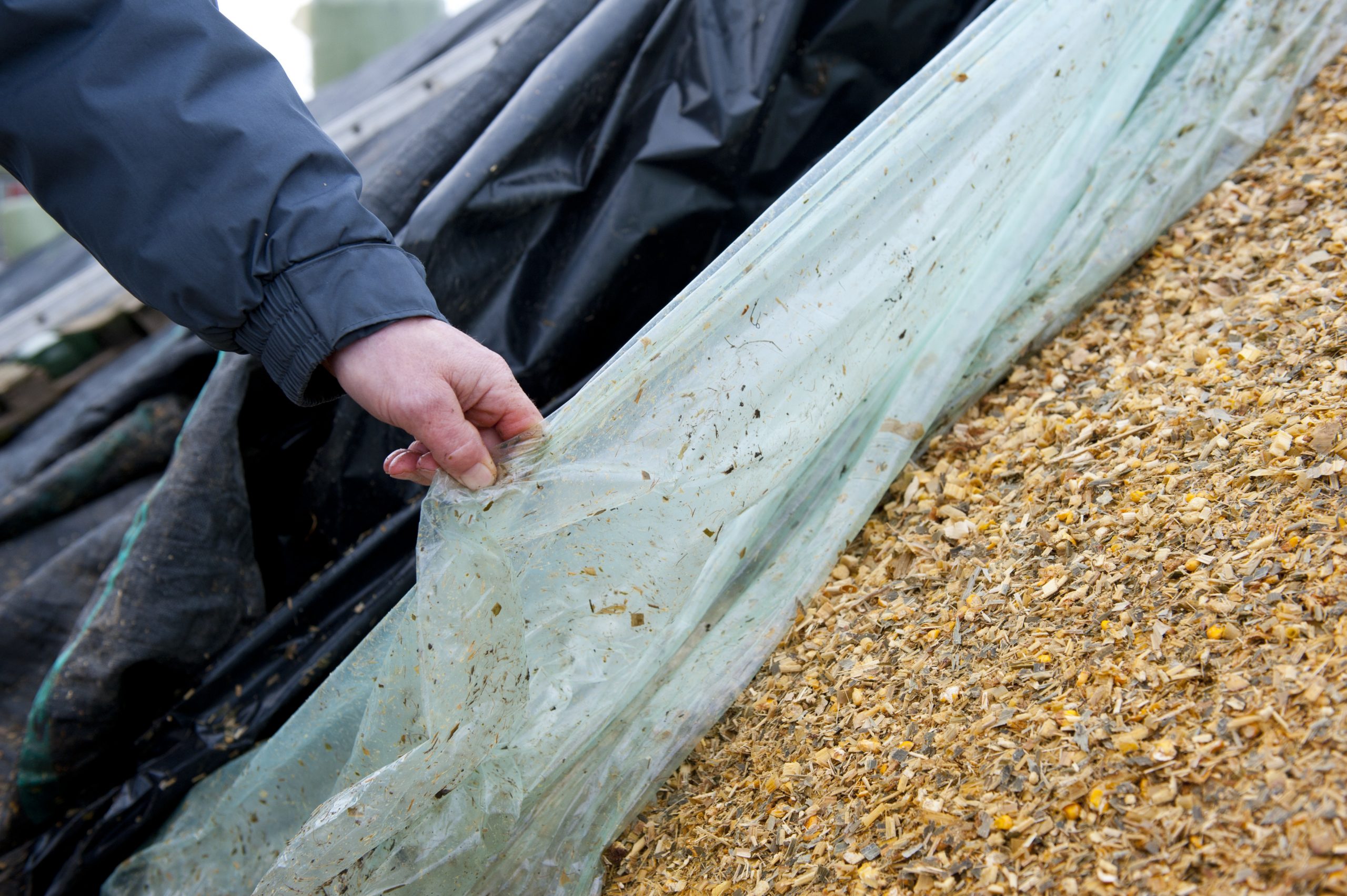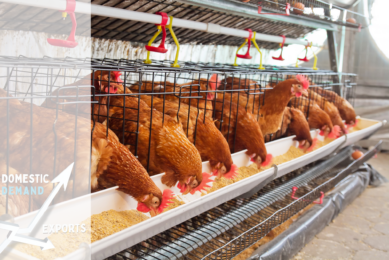Good bacteria for a better maize silage

The use of inoculants can improve the aerobic stability of maize silage. But can it also reduce the contamination levels of mycotoxins?
The use of inoculants in silage is not new, but some farmers have doubts about the cost effectiveness of silage inoculants, especially for maize silage, which is considered easy to ensile. However, suboptimal management of maize silage (e.g., inadequate DM concentration at harvest, slow silo filling, imperfect mass sealing, poor mass compaction, delay of mass pH decline, air penetration, and inappropriate unloading techniques) could lead to air penetration and consequent aerobic deterioration of the ensiled mass. This in turn can lead to moulds, undesirable microorganisms and mycotoxins. A new study, published in the Journal of Animal Feed Science and Technology looked at the effect of a commercial silage inoculant on fermentation, dry matter (DM) loss, aerobic stability, microbial counts, and mycotoxin contamination of maize ensiled at 2 different densities, as a simulation of differences in silo management.
Experimental design
Approximately 4 tonnes of freshly chopped maize forage was sampled from different plots of an experimental field in Italy and each of them was split into 2 equal amounts; one mass was untreated (CTR, without any inoculant) and the other mass was treated (TRT) with an inoculant containing Lactobacillus buchneri LB1819 and Lactococcus lactis O224 (SiloSolve® FC, Chr. Hansen A/S, Hørsholm, Denmark), used according to the manufacturer’s recommendations. In particular, the inoculant (freeze dried powder) was diluted in heated tap water and applied at the rate of 2 mg/kg of fresh forage with a sprayer, to reach a final dose of approximately 250,000 CFU/g freshly-chopped forage. An equal amount of heated tap water without inoculant was sprayed on the CTR mass. The CTR and TRT freshly chopped forages were thoroughly mixed with a wheel loader and shovels.
Mycotoxins can have a huge effect on the health and productivity of livestock – check out this informative feature.
3 representative samples (about 1 kg each) were taken from different parts of each forage pile, pooled into one sample, stored in airtight bags, and used for analysis of chemical characteristics and mycotoxin contamination.
Both CTR and TRT freshly-chopped maize were then placed into 20 L plastic jars (“mini-silos”), compacted to a low density (132 ± 6 kg DM/m3) or a high density (186 ± 6 kg DM/m3), and then carefully sealed with plastic lids and stored in a barn (ambient temperature: 20.3 ± 0.6 °C). Accordingly, the 4 different treatments were: CTR-low density (CTR-LD), CTR-high density (CTR-HD), TRT-low density (TRT-LD), and TRT-high density (TRT-HD). A total of 100 mini-silos were prepared. In particular, 20 mini-silos for each treatment and each duration of ensiling (2, 4, 8, 16, or 32 days) were prepared from each forage pile. The mini-silos were weighed immediately after closing and before opening to determine DM loss.
Results
Silage DM decreased with ensiling duration and was 353 g/kg as-fed on day 2 and 347 g/kg as-fed on day 32. In addition, the DM concentration was 3 g/kg as-fed lower in the CTR silage than in the TRT silage (P < 0.05). inoculation and silage density had no effect on dm loss, but dm loss increased almost linearly with ensiling duration (p >< 0.05), from 41 g kg dm on day 2–61 g kg dm on day 32. silage ph decreased with ensiling duration, from 3.90 on day 2 to 3.45 on day 32. on day 32, the ph in the trt-hd silage reached it maximal value of 3.49 (p >< 0.05, days × inoculation × density interaction).>
Yeast (average: 4.53 log10 CFU/g) and mould (average:1.59 log10CFU/g) counts were similar among all silages. Aflatoxin B1 was detected in all CTR samples and in 0.6 of TRT silages, and the contamination levels were similar (0.412 μg/kg DM). We also detected fumonisin B1, fumonisin B2, and fusaric acid in all samples. The fumonisin B2 level was greater in the CTR than TRT silage (413 vs. 278 μg/kg DM, P < 0.05), but the fusaric acid level was lower in the ctr than trt silage (2849 vs. 4162 μg kg dm, p >< 0.05). despite the overall low levels of mycotoxin contamination, a 10-fold higher level of roquefortine c (p >< 0.05) was present in the ctr than trt silage.>
Conclusions
This study confirms that inoculation of maize silage with Lactobacillus buchneri LB1819 and Lactococcus lactis O224 improved its aerobic stability, and that the improvement was greater at a high silage density. Our analysis of mycotoxin contaminants indicated that the inoculation protocol reduced the levels of fumonisin B2 and roquefortine C, but increased the level of fusaric acid. However, under the conditions of the current experiments, inoculation of maize silage provided no benefits to other classically studied parameters, including the fermentation profile.











